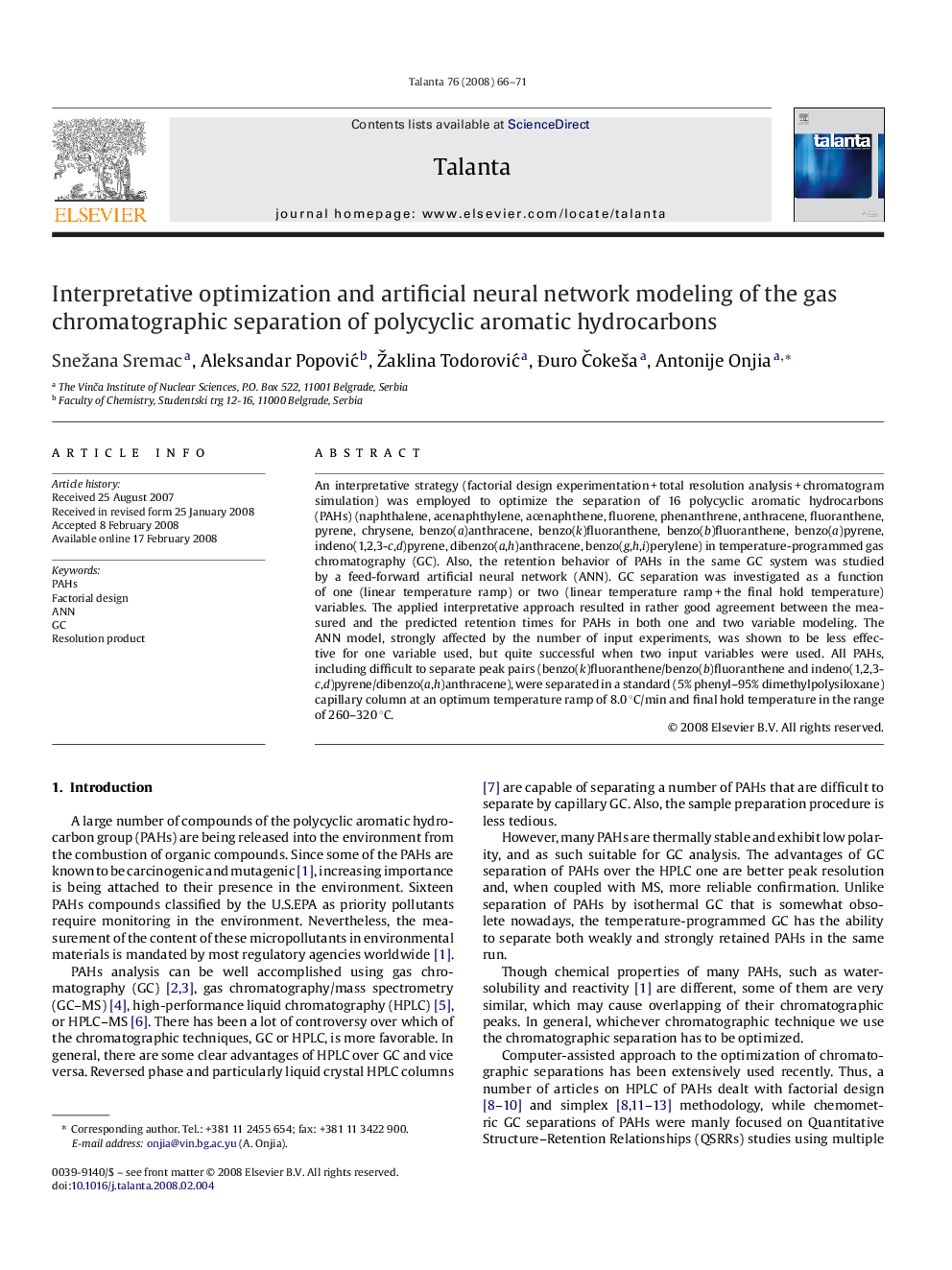| Article ID | Journal | Published Year | Pages | File Type |
|---|---|---|---|---|
| 1243962 | Talanta | 2008 | 6 Pages |
An interpretative strategy (factorial design experimentation + total resolution analysis + chromatogram simulation) was employed to optimize the separation of 16 polycyclic aromatic hydrocarbons (PAHs) (naphthalene, acenaphthylene, acenaphthene, fluorene, phenanthrene, anthracene, fluoranthene, pyrene, chrysene, benzo(a)anthracene, benzo(k)fluoranthene, benzo(b)fluoranthene, benzo(a)pyrene, indeno(1,2,3-c,d)pyrene, dibenzo(a,h)anthracene, benzo(g,h,i)perylene) in temperature-programmed gas chromatography (GC). Also, the retention behavior of PAHs in the same GC system was studied by a feed-forward artificial neural network (ANN). GC separation was investigated as a function of one (linear temperature ramp) or two (linear temperature ramp + the final hold temperature) variables. The applied interpretative approach resulted in rather good agreement between the measured and the predicted retention times for PAHs in both one and two variable modeling. The ANN model, strongly affected by the number of input experiments, was shown to be less effective for one variable used, but quite successful when two input variables were used. All PAHs, including difficult to separate peak pairs (benzo(k)fluoranthene/benzo(b)fluoranthene and indeno(1,2,3-c,d)pyrene/dibenzo(a,h)anthracene), were separated in a standard (5% phenyl–95% dimethylpolysiloxane) capillary column at an optimum temperature ramp of 8.0 °C/min and final hold temperature in the range of 260–320 °C.
